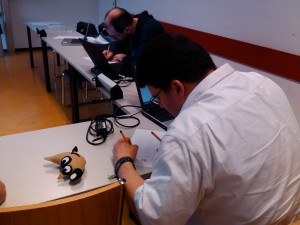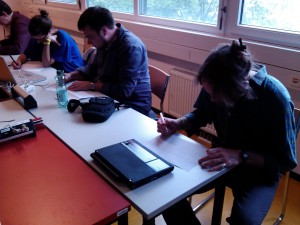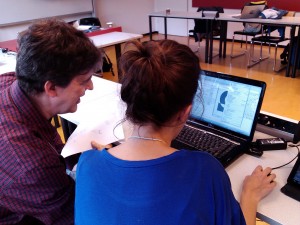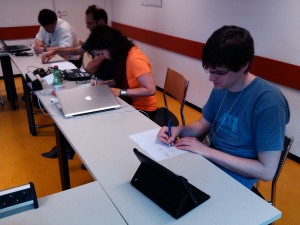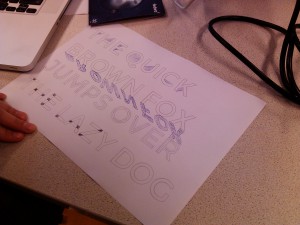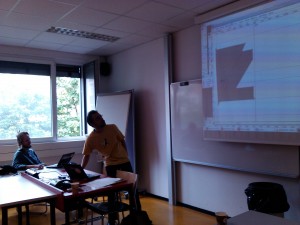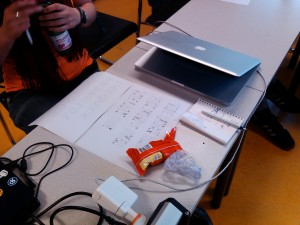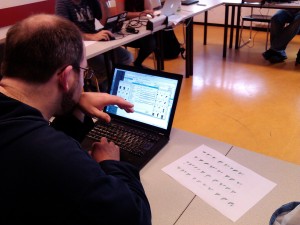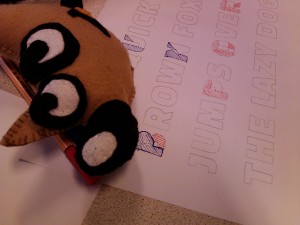During the recent Libre Graphics Meeting in Vienna, we hosted a typography workshop, under the theme of multicoloured fonts. While developing version 1.1 of Colorfont.js, we put together a collection of colorfonts — variations of one font that can be used with different colours, overlaying each other.
This had us thinking about the specifics designing a font to be used with two or more colours, particularly how to "cut" a font, meaning the division of a typeface into two or more colour areas. Looking at past instances of coloured type, we began wondering which kind of cuts could be made to the glyphs, which cuts work best, how to achieve rhythm, and how to systematize the cuttings, finding if possible some kind of logic in the process.
Having all this in mind, we did a first experimental session around colorfonts in Brussels, during our residency at Constant Variable. From that workshop, everyone came up with many ideas and input for new colorfont designs, during a full afternoon around letters and colour. We took some cues from this session to organize the Colorfont Workshop in Vienna.

We had only two hours available and a mix audience of artists & programmers. We started with a quick intro to the theme and moved to dribbling with pen and paper right away. For this session we choose a set of five libre fonts: Changa One, League Gothic, M+ P Black, Monserrat and Paytone One. We printed out the uppercase latin alphabet using outlined letters and distributed them among the participants.

We wanted each person to plan in paper what they would execute later in FontForge — it's too easy to lose oneself in the program, so the goal was to have everything fleshed out before even touching the computer. After that we moved to a quick Fontforge tutorial, focusing on techniques for subtracting parts of a glyph.
While some went forward translating their paper designs into actual colorfonts, other participants struggled with getting Fontforge to work, specifically inside OSX. Lesson learned for future workshops: the only safe way to have Fontforge running on OSX is to use a virtual machine running a GNU/Linux system; in the next workshops we'll bring some ready-made virtual machine installations so that anyone can quickly run an instance of Fontforge without hassle.
The workshop ended with some bright surprises: not only having finished a full uppercase colorfont, Simon Budig found the time and determination to fix a selection bug in Colorfont.js.

Other participants also came up with some clever and beautiful designs, which are now showcased at the Colorfont website.Check them out!
 Manufactura Independente
Manufactura Independente
